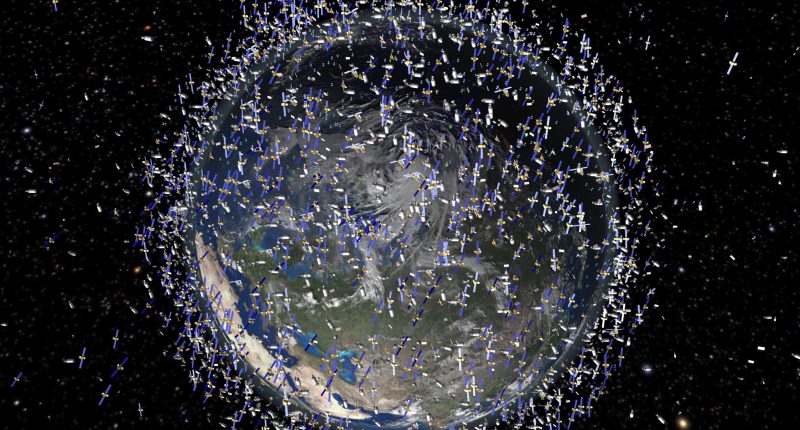A JAPANESE space team has revealed how they plan to use powerful lasers to blast junk out of space.
The team at SKY Perfect JSAT Corp have spent years developing their world-first laser canons that can remedy the increasing issue of junk in Earth‘s atmosphere.
It has been claimed that these revolutionary lasers will be powerful enough to disrupt the way pieces of junk have been orbiting around the Earth.
SKY Perfect JSAT Corp’s new venture, dubbed Orbital Lasers, have said that these laser beams will be able to vaporise part of the surface of any space junk.
By vaporising part of the surface of the debris, they can then control the direction with which it rotates around the Earth.
Still focused on the junk, the lasers can then direct the beams to guide the debris slowly towards Earth.
read more space
The process of doing so, in a careful and controlled manner, will reportedly make the debris burn up as it reaches Earth’s atmosphere.
Orbital Lasers claim that their project is the safest way to deal with space junk as it avoids physical contact with other objects.
As the junk is directed slowly into our planet’s atmosphere, where it immediately burns up, it is harmless and no longer poses a problem.
Dangers of space junk
On the Moon alone: there are spacecraft remains from over 50 crash landings, 100 bags of human waste, and other items like golf balls.
In Earth’s orbit: there are more defunct spacecraft parts, rocket boosters, dead satellites, and random items like toothbrushes.
There is at least 1 million pieces of junk larger than 1mm and tens of thousands larger than 10cm.
All of these pieces of junk are travelling at 15,000mph.
If the problem is allowed to persist, debris will grow exponentially and orbiting near-Earth would become impossible.
It currently poses the biggest risk to orbiting satellites, but if it continues, it could damage space exploration efforts.
The project was officially launched in Tokyo on January 30, where they said that the first lasers will be ready for sale in 2025.
Most read in Tech
“The issue of space debris is now regarded as an environmental problem as significant as global warming and marine plastic pollution,” Orbital Lasers said in a statement.
“SKY Perfect JSAT and Orbital Lasers are earnestly addressing this concern and aiming to contribute to the improvement of a sustainable space environment.
“This milestone follows the announcement in June 2020 to design and develop the payload of the world’s first satellite for space debris removal using laser technology, in collaboration with the Institute of Physical and Chemical Research (RIKEN).
“As a result of this progress, a startup was born from SKY Perfect JSAT.”
The group added: “Orbital Lasers will not only engage in space debris removal but also aims to further utilise and develop its laser technologies.
“By incorporating space-based LiDAR (Light Detection and Ranging) technology into satellites, the company aspires to become the world’s first commercial provider of high-precision ground surface information through the use of Satellite LiDAR.”
The European Space Agency (ESA) have said that over a million pieces of debris from discarded parts of satellites and spacecraft are orbiting the Earth.
Towards the end last year, a report from the UN revealed that around 75 per cent of the objects in Earth’s orbit are “junk”.
If this space debris crashes into important satellites, society could be negatively impacted.
The report explains: “Given that these objects travel over 25,000 kilometres per hour, even the smallest debris can cause significant damage.
“Each piece of debris becomes an obstacle in the orbital “highway”, making it increasingly difficult for functional satellites to avoid collisions.”
Space experts and avid researchers have been attempting to come up with a solution to the problem for years – to very little avail.
Some startups have envisioned methods involving satellites with robot arms or devices with wires that could scoop up debris.
In 2018, a space team from the UK attempted to grab a defunct satellite by using a giant net. A year later, they used a harpoon.
READ MORE SUN STORIES
Although both attempts were successful worked, these methods are limited to removing larger pieces of debris.
Until now, there hasn’t been a feasible implementation of possible remedies to the problem.














